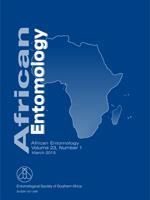Female Aedes aegypti mosquitoes are vectors of yellow fever, dengue and chikungunya viruses. Pre-exposure of Ae. aegypti larvae to the herbicide atrazine significantly reduced their sensitivity to the organophosphate insecticide temephos. Mosquito larvae pre-exposed for 48 h to non-lethal concentrations of atrazine ranging from 1 to 10 μg/l commonly encountered in the field, appeared slightly less sensitive to temephos than non-pre-exposed larvae. The effect of a pre-exposure to atrazine on larval tolerance to temephos did not seem to be related to an induction of detoxification processes by this herbicide.Noimportant increase in glutathione transferase, or α- and β-esterase activities was observed in pre-exposed larvae, while P450 monooxygenase activities increased.
How to translate text using browser tools
1 March 2015
Increase in Tolerance of Aedes aegypti Larvae (Diptera: Culicidae) to the Insecticide Temephos after Exposure to Atrazine
M. Jacquet,
M. Tilquin,
P. Ravanel,
S. Boyer
ACCESS THE FULL ARTICLE
It is not available for individual sale.
This article is only available to subscribers.
It is not available for individual sale.
It is not available for individual sale.

African Entomology
Vol. 23 • No. 1
March 2015
Vol. 23 • No. 1
March 2015
Aedes aegypti
atrazine
mosquito
pesticide interactions
resistance
temephos




